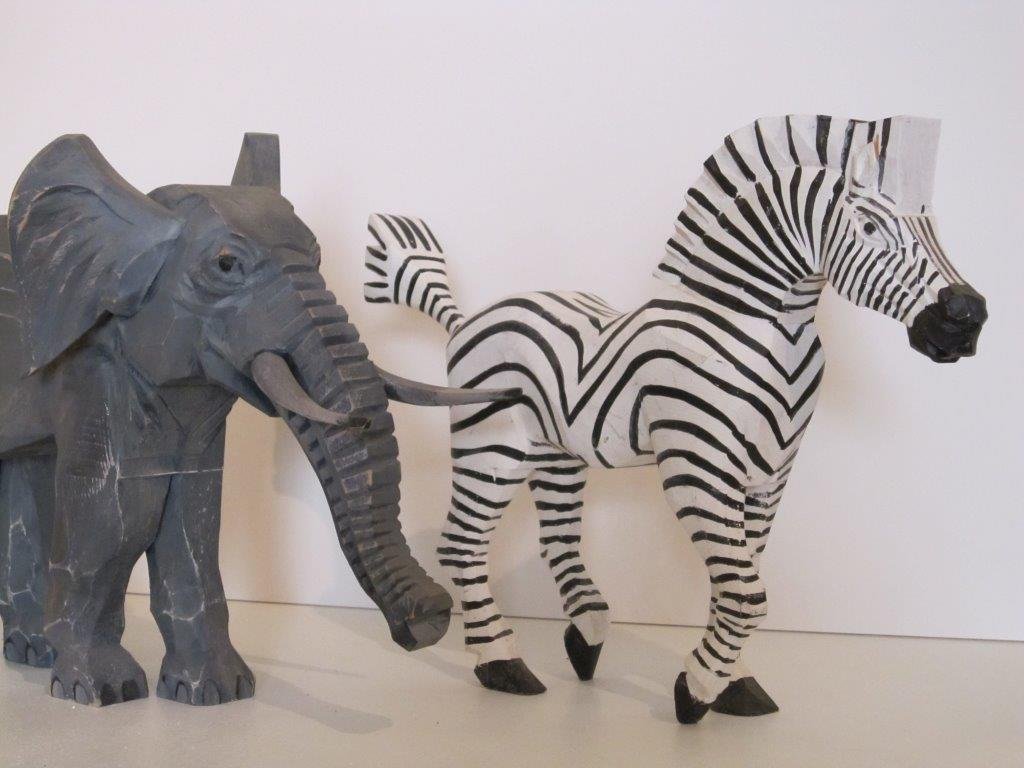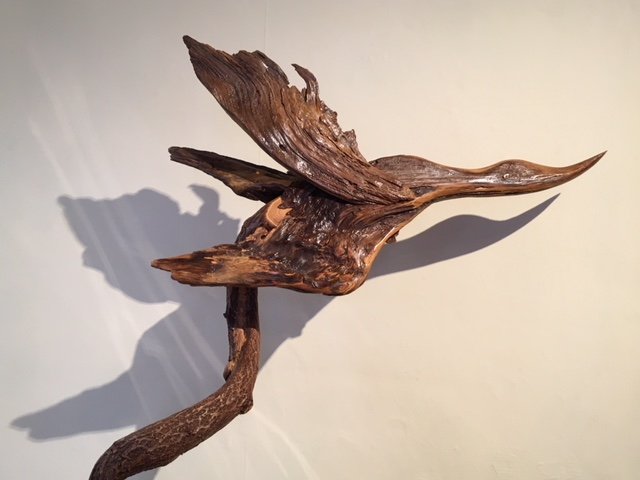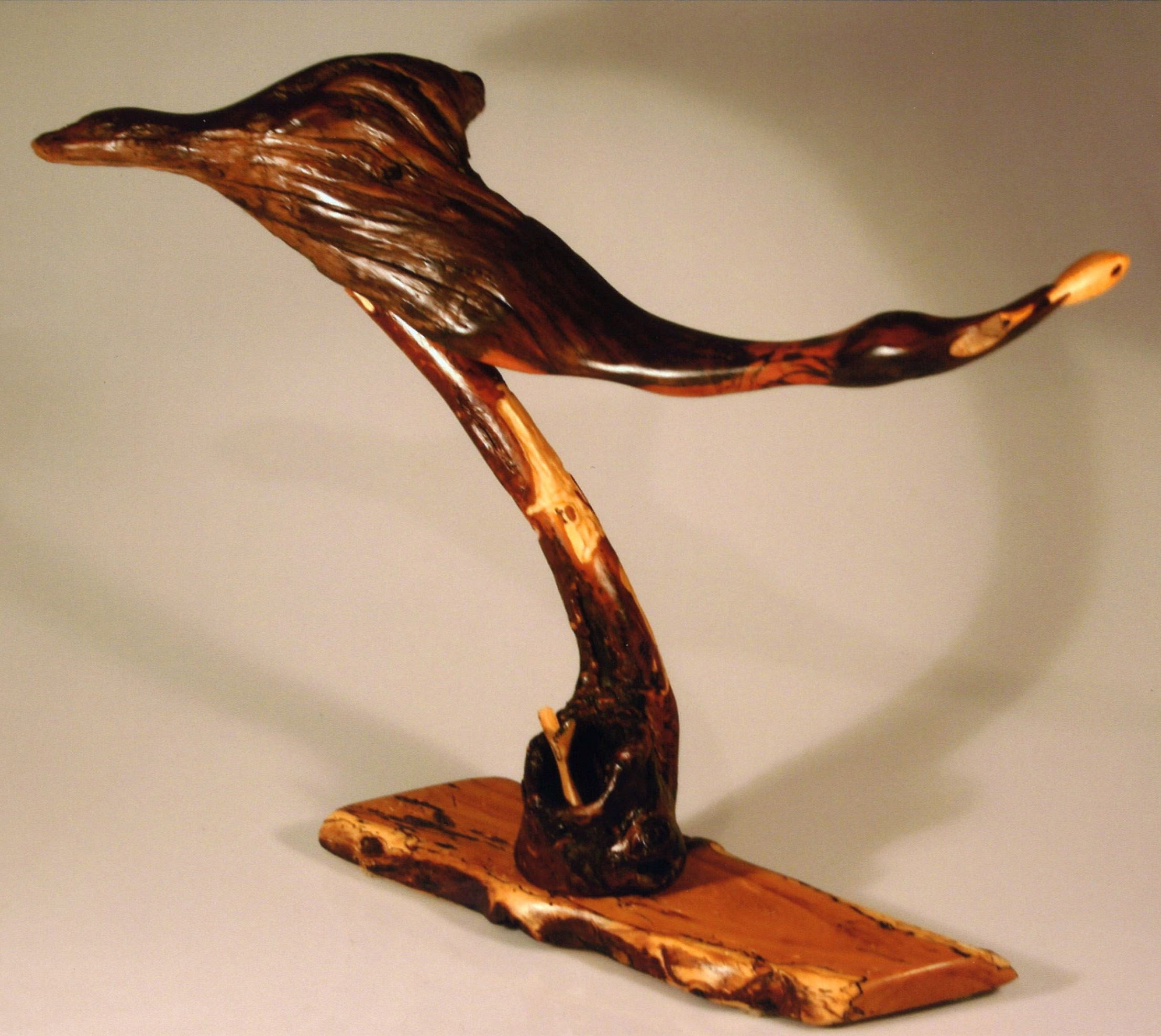Waterfowl Wonders and Amusing Animals
by
Three Self-Taught Addison County Vermont Carvers
Waterfowl Wonders and Amusing Animals by three self-taught Addison County Vermont carvers – Gary Starr, Chuck Herrmann, and William Holway - greet delighted visitors to the Henry Sheldon Museum in Middlebury, Vermont. Their carvings will be on view through summer 2018.
Gary Starr – Carver Waterfowl Decoys and Birds
Following an education at the Cornell University School of Hotel Management, Gary Starr first worked for ITT Sheraton Corporation, including an assignment at Universal Studios in Hollywood, CA, when a position as Director of Food Services at Middlebury College brought him to Vermont.
While growing up in Duxbury, Massachusetts, Gary had been exposed to the world-class antique decoy collection of this father Dr. George R. Starr, who was also a wood carved and hunter. Dr. Starr taught Gary to carve, but not until Gary had spent twenty years at Middlebury College, did he decide leave food services to reinvent himself and take on wood carving as a career.
He has become a world-class self-taught carver whose decorative decoys and birds are on display at the Sheldon – from three magnificent oversized shore birds – one standing, a second running, and a third feeding – to a variety of life-sized colorful birds including a Puffin, American Oyster Catcher, Belted King Fisher, Baltimore Oriole, and Lilac Breasted Roller.
Gary Starr and his wife Kathy travel the world seeking inspirational birds that become stunning carved replicas when Gary returns to his Vermont studio. During the exhibit, Gary will be offering gallery talks sharing their birding travels and his carving history.
William Holway – Carver of Indigenous and Exotic Animals
A native of Rutland, Vermont, Bill Holway became an artist after an eclectic life journey – cross country hitchhiker, actor, periodic college student (UCLA, Tufts, and RISD), attendant at a mental hospital, and theological scholar. Known for both his drawings and carvings, the latter originated as a youth in Rutland during a failed attempt to carve rocking horses. For years he was known locally for his “performance drawings” at Kennedy Brothers in Vergennes. He continues his passion for drawings, which are accomplished with lighting speed, but no longer as public performances.
Before perfecting his drawing, Bill Holway began his artistic pursuits by whittling and was one of the original craftsmen when Frog Hollow the Vermont State Craft Center was started in Middlebury in 1971. His goal was “to teach all his students safe ways to handle knives and to carve.” Holway’s carving creations have included puppets, rocking horses, eagles, and the varied animals that populated Noah’s Ark.
His wood carvings at the Sheldon feature a moose with an iconic rack of antlers and a prominent beard-like dewlap under its chin, a brown bear, a frolicking horse, and more exotic animals such as long-horned goat, hippopotamus, elephant, zebra, camel, and giraffes.
Each carving attests to a unique personality and/or brightly colored exterior. Animals from the woods of Vermont and the jungles of Africa can be found at the Sheldon Museum, quixotic creations of inveterate craftsman Bill Holway.
Chuck Herrmann – Abstract, Interpretive Wood Carver and Vermont Wood Historian
After coming to Vermont as a teacher at the Bristol Elementary School, Chuck Herrmann supplemented his income by opening Woodware on Route 7 South in Middlebury where he offered wood products manufactured or crafted locally. Soon Herrmann’s historian and artistic instincts led him to study the native woods of Vermont, the lives of the craftsmen, and the history of the wood industries in the Green Mountain State.
He left teaching, devoted all his efforts as owner of Woodware, until he sold the store to his son Drew. Chuck then had time to concentrate most of his energies on continuing his study of wood manufacturers and craftsmen in Vermont, on writing, and soon on carving his imaginative, abstract interpretations of waterfowl crafted from varied woods.
Chuck’s carvings are a reflection of his deep commitment to the Vermont forest, its history and value. As an example, true to his investigative and collecting habits, he carved birds and waterfowl from remnants of a “root fence” that was once located on a farm field at New Haven Junction at the intersection of Routes 7 and 17.
He draws his inspiration from Henry David Thoreau whose December 1855 Journal described the roots in a similar fence “as not merely interwoven, but grown together into solid frames, full of loopholes like Gothic windows of various sizes and all shapes, triangular and oval and harp-like, and the slenderer parts are dry and resonant like harp strings.” But under Chuck’s steady hand and imagination, carved, abstract, floating wild fowl forms, rather than windows and musical instruments have emerged from the root fence. In addition to the root fence carvings from pine, his offerings include carvings from walnut, sugar maple, cherry, spalted maple, and honeysuckle.

















